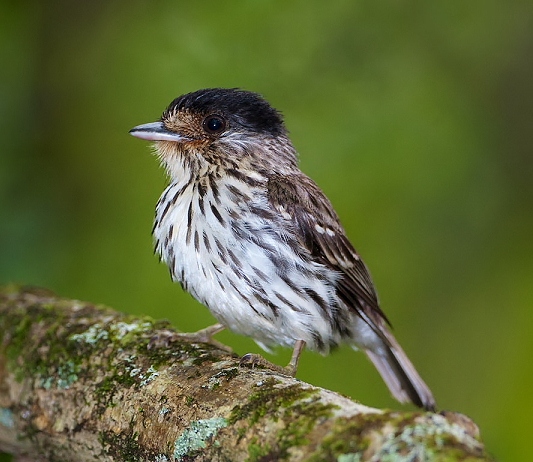 |
| Photo by Hugh Chittenden (10.000 Birds) |
Common name:
African broadbill (en); bico-largo-africano (pt); eurylaime du Cap (fr); eurilaimo africano (es); schwarzscheitel breitrachen (de)
Taxonomy:
Order Passeriformes
Family Eurylaimidae
Range:
This African species is found in two separate populations, one in coastal West Africa and a larger one in East African from Uganda south to Zimbabwe, Botswana and north-eastern South Africa.
Size:
These birds are 14 cm long and weigh 20-25 g.
Habitat:
This species is mostly found in coastal evergreen forests and dry savannas, but also in inland moist forests, scrublands and sometimes also in plantations and arable land. They occur from sea level up to an altitude of 2.550 m.
Diet:
They mostly forage on the ground or in the trees, and ocasionally in flight, taking insects such as beetles, grasshoppers, bugs and caterpillars, and spiders.
Breeding:
African broadbills mainly breed in October-January, but this may vary between different parts of their range. They are monogamous and nest in an oval-shaped structure with a side entrance, made of bark, dry leaves, twigs, grass and rootlets, often held together by strands of spider web. It hangs conspicuously from a low branch of a tree, usually 1,5-3 m above the ground. The female lays 1-3 white eggs, which she incubates alone for 16-17 days while the male keeps watch outside the nest. The chicks are mainly fed by the male but there is no available information regarding the fledgling period.
Conservation:
IUCN status – LC (Least Concern)
This species has a very large breeding range and, although the global population size has not been quantified, the African broadbill is reported to be locally common. The population is suspected to be in decline owing to ongoing habitat destruction but it is not considered threatened at present.







